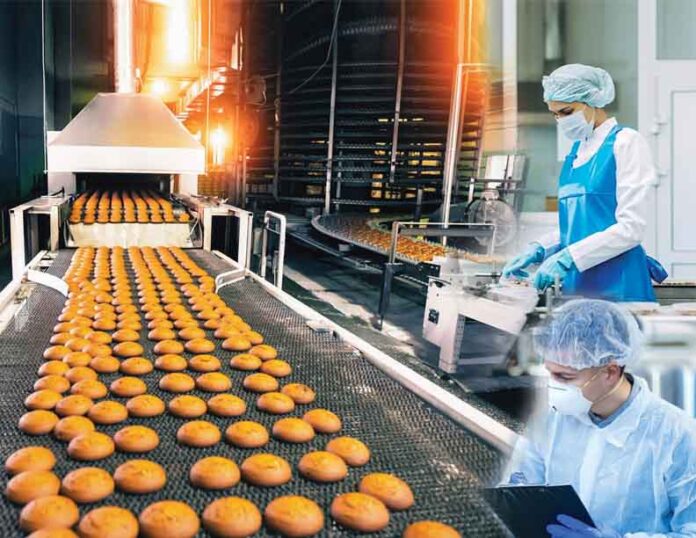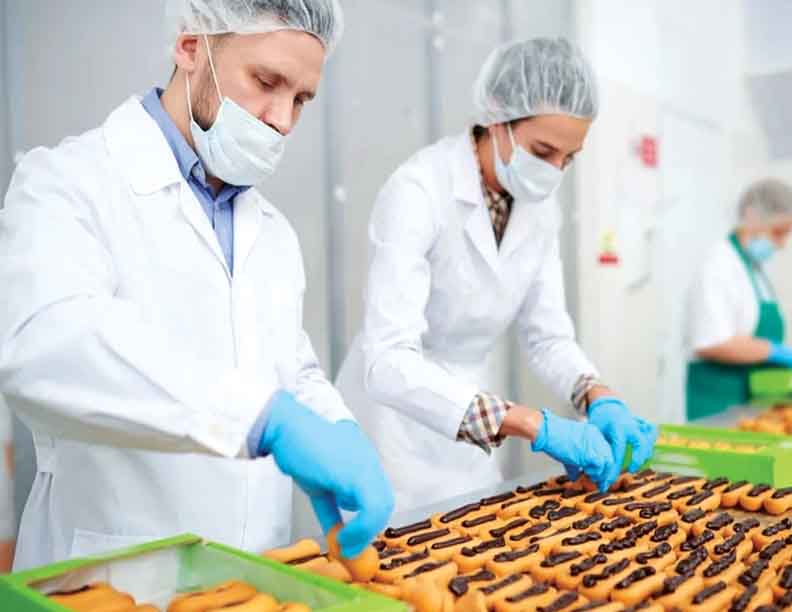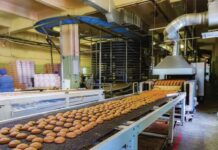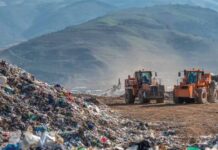
Refrigeration is a subject whose need is increasing day by day. New technologies are emerging over time, and their modifications are also continuing. Among its many applications, the purpose of my article today is to talk about a promising technology, if it develops properly, perhaps the picture of today’s food freezing methods will completely change.
Several food freezing technologies including Air blast; Freezers, Contact freezers, Impingement freezers, Cryogenic freezing, Ultrasonic assisted freezing and some others are prevalent today in the food and food logistics industry. Among them, the Ultrasonic-Assisted Freezing (UAF) is highly promising – because it enhances freezing efficiency and improves the quality of frozen foods. It achieves this by accelerating freezing, reducing ice crystal size, and minimising drip loss upon thawing, leading to better texture and longer shelf life. Furthermore, UAF is considered an eco-friendly and additive-free technology. Let us now have a closer look at this technology.
The UAF technology
In brief, Ultrasound-Assisted Freezing (UAF) is a food preservation technique that uses ultrasound to improve the freezing process, leading to faster freezing times and better-quality frozen products. It works by enhancing ice nucleation, promoting the formation of smaller ice crystals, and improving heat transfer, thus reducing damage to food tissues and preserving sensory and nutritional characteristics.
UAF utilises the physical effects of ultrasound (cavitation, microstreaming, etc.) to accelerate ice crystal formation and growth during freezing. This technology is increasingly being explored for freezing various food products, including high-value foods and pharmaceuticals, where maintaining quality is crucial. Generally, the use of ultrasound technology in food processing involves pressure waves with a frequency ranging from 20 to 100 kHz.
Benefits of UAF
Ultrasonic-Assisted Freezing (UAF) technology is beneficial because it can improve the quality and efficiency of food freezing processes. It works by using ultrasound to induce nucleation and control ice crystal formation, leading to smaller, more uniform ice crystals, reduced drip loss, and faster freezing times. This results in better retention of food’s texture, colour, and nutritional value.
- Smaller ice crystals: UAF helps create smaller ice crystals during freezing, minimising damage to food cells and tissues, which can lead to improved texture and reduced drip loss during thawing.
- Enhanced texture: By controlling ice crystal formation, UAF can help maintain the desired texture of frozen foods, preventing them from becoming mushy or rubbery after thawing.
- Better colour and nutrient retention: Studies have shown that UAF can help in preserving the colour and nutritional content of frozen foods, such as anthocyanins, vitamin C, and phenolics, better than traditional freezing methods. (Reference:http://bitly/3J1aI8s)
- Improved flavour: UAF can also positively impact the flavour of some foods, particularly meat products, by promoting the penetration of salt and other substances during freezing, potentially improving the overall taste after cooking or processing (Reference:http://bit.ly/4192S2O)
Enhanced freezing efficiency
The efficiency of UAF originates from its ability to accelerate the freezing process by enhancing heat and mass transfer, and to control the ice crystallisation process, resulting in smaller and more uniform ice crystals. This leads to reduced cellular damage and better preservation of the frozen food’s quality compared to traditional freezing methods.
Studies have shown that UAF can reduce freezing time and improve freezing efficiency, leading to potential energy savings (however, it needs further research and apparently not true in all cases). This is achieved by accelerating the freezing process and improving the heat transfer during freezing.
- Reduced freezing time: Ultrasound waves create cavitation, which generates micro-streaming and micro-turbulences that accelerate heat transfer, thus shortening the overall freezing time.
- Improved heat transfer: The cavitation bubbles formed during sonication facilitate more efficient heat exchange, speeding up the freezing process.
- Elimination of supercooling: UAF can eliminate the phenomenon of supercooling, where liquids remain in a liquid state below their freezing point, further improving the freezing process and potentially saving energy. (Reference: https://bit.ly/4lBkug6)

Application areas in food industry
Although today Ultrasonic-Assisted Cooling (UAC) is being used in various applications, primarily focusing on improving the efficiency and effectiveness of cooling processes in different industries; it is particularly prevalent in food processing, where it enhances freezing, thawing, and freeze concentration. Beyond food, UAC finds applications in materials processing, pharmaceuticals, and even some aspects of wastewater treatment. However, in this article, my focus will remain confined to its applications in the food-related areas only; where the various applications include:
- Freezing: UAC can accelerate the freezing process, leading to smaller ice crystal formation and better preservation of the food’s microstructure and texture.
- Thawing: Similar to freezing, UAC can expedite thawing – reducing drip loss and improving the overall quality of thawed food products.
- Freeze concentration: UAC can be applied to concentrate food products by freezing out water, improving efficiency and potentially reducing energy consumption.
- Drying: UAC can be integrated with drying processes to enhance drying kinetics and improve the quality of dried food products.
- Other applications: UAC also finds use in processes like brining, sterilisation, and pasteurisation in the food industry.
Challenges involved in incorporating UAC in food industry
Ultrasonic cooling technology in the food industry faces challenges such as limited penetration depth in dense food matrices, potential for heat generation due to cavitation etc. While it can enhance freezing rates and potentially improve product quality, the technology’s effectiveness can be hindered by the complex nature of food and the need for precise control of ultrasonic parameters. Some of its prominent challenges include:
- Limited penetration: Ultrasound struggles to penetrate deeply into dense or complex food matrices like protein-rich foods, which can limit its effectiveness in reaching the core of the product.
- Heat generation: High-intensity ultrasound can create localised heating due to cavitation, potentially leading to undesirable changes in food properties, such as protein oxidation or altered texture.
- Energy consumption: As I’ve mentioned earlier, further work is necessary to make this technology more energy efficient; in many cases, ultrasonic cooling systems can require significant amounts of energy, making them less cost-effective for large-scale industrial applications.
- Cavitation effects: While cavitation can enhance cooling in some cases, it also creates complex acoustic fields – and can cause undesirable effects like cell damage or structural changes in the food.
- Need for optimisation: Selecting the appropriate frequency, power, and mode of operation is crucial for optimal performance, and this often requires specific pre-experiments for different types of food.
- Potential for damage: In some instances, ultrasound can cause mechanical damage to food products, particularly in delicate items or during prolonged exposure.
- Industrial implementation: Implementing UAF on a large industrial scale can be challenging due to the need for specialised equipment and precise control.
Ultrasonic-Assisted Freezing (UAF) is highly promising – because it enhances freezing efficiency and improves the quality of frozen foods…
Present research outcomes
Several research works indicate that ultrasound technology shows promise for improving cooling processes in the food industry, particularly in freezing and chilling applications. It can enhance freezing rates, reduce ice crystal size, and improve the overall quality of frozen foods. Furthermore, ultrasound can be combined with other techniques, like mild heat treatment (thermosonication), to achieve better results in pasteurisation and preservation while maintaining food quality.
However, scaling up laboratory findings to industrial-level processes can be complex and require careful optimisation.
Will UAF be ubiquitous in food industry soon?
It is a thousand-dollar question today. However, looking at the current R&D trend and advances, it may be said that wider penetration of UAF in food industry will likely be a gradual process with significant adoption within the next 5 to 10 years, possibly sooner for specific applications.
Several universities; including Shanghai Ocean University, Zhengzhou University of Light Industry and University College Dublin; are actively conducting their research works on ultrasound-assisted freezing. These institutes are exploring the technology’s potential to improve freezing efficiency and food quality.
Today, several companies are involved in ultrasonic technology for food processing, including cutting, sealing, and potentially cooling. While ultrasonic cooling is a less common application, companies like Dukane and Herrmann Ultraschall are known for their work in ultrasonic cutting and sealing within the food industry. However, research projects like NANOBAK2 have explored innovative cooling technologies using ultrasound. NANOBAK2 was a collaborative research project focused on developing energy-efficient proofing (the final rising stage of yeast-leavened dough before baking) and cooling systems for bakeries using ultrasonic humidification. Several other European ongoing projects are also sharing similar goals.
By P. K. Chatterjee (PK)








